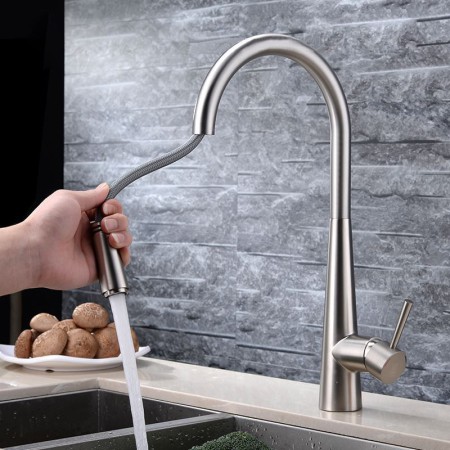Buying a kitchen faucet can be a bit overwhelming with so many options available in the market. Here are some steps that can help you in making an informed decision:
- Consider the type of faucet: There are different types of kitchen faucets, such as single handle, dual handle, pull-out, pull-down, and touchless. Each type has its advantages and disadvantages, so consider your needs and preferences before selecting a type.
- Look for the right finish: The finish of the faucet can make a big difference in the overall look of your kitchen. Popular finishes include chrome, stainless steel, brushed nickel, and oil-rubbed bronze.
- Check for compatibility: Make sure that the faucet you choose is compatible with your sink and the number of mounting holes in it. Most sinks have either one, two, or three mounting holes, and the faucet should match the number of holes in your sink.
- Look for additional features: Some faucets come with additional features like a built-in soap dispenser, water filtration system, or a spray wand. Consider these features if they meet your needs.
- Check for warranty: Make sure that the faucet you choose comes with a warranty. A good warranty will protect you from any defects or problems that may arise.
- Consider your budget: Kitchen faucets can vary widely in price, so it’s essential to consider your budget. Decide how much you’re willing to spend and look for a faucet that meets your needs within that budget.
By following these steps, you can select a kitchen faucet that meets your needs and complements your kitchen’s overall style.
Before Replacing Your Kitchen Faucet
There are a few things that you should do to ensure a smooth installation process. Here are some essential steps:
- Turn off the water supply: Before you start removing your old faucet, turn off the water supply to your kitchen. You can do this by shutting off the main water valve or turning off the valve located under the sink.
- Remove any items from under the sink: Clear out any items from under your sink to give you more room to work.
- Gather tools and supplies: Make sure you have all the necessary tools and supplies before you start the installation process. Common tools needed for the job include an adjustable wrench, pliers, and a basin wrench.
- Take a picture of your current setup: Take a picture of your current faucet setup to help you remember how everything is connected. This can be helpful during the installation process.
- Read the manufacturer’s instructions: Read the manufacturer’s instructions that come with your new faucet to ensure that you understand the installation process.
- Check for leaks: Before you install your new faucet, check the sink and faucet for any leaks. This will help you identify any potential problems before you start the installation process.
By taking these steps, you can ensure that you are prepared for a smooth installation process and avoid any potential problems. If you’re not confident in your ability to replace your kitchen faucet, consider hiring a professional plumber to do the job for you.
